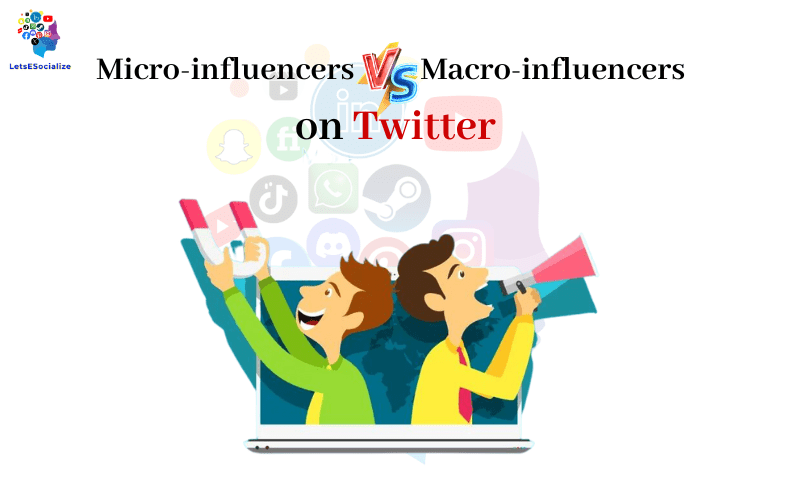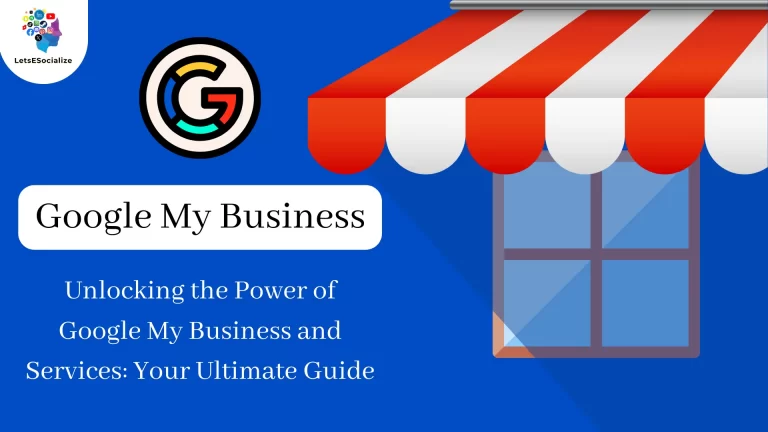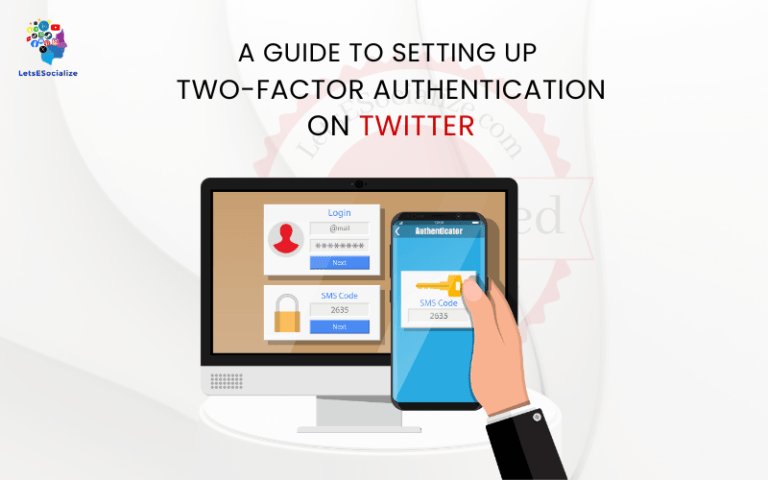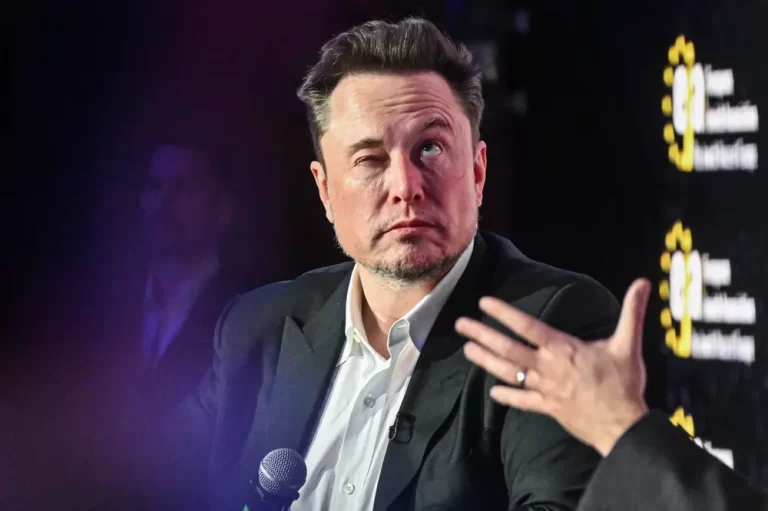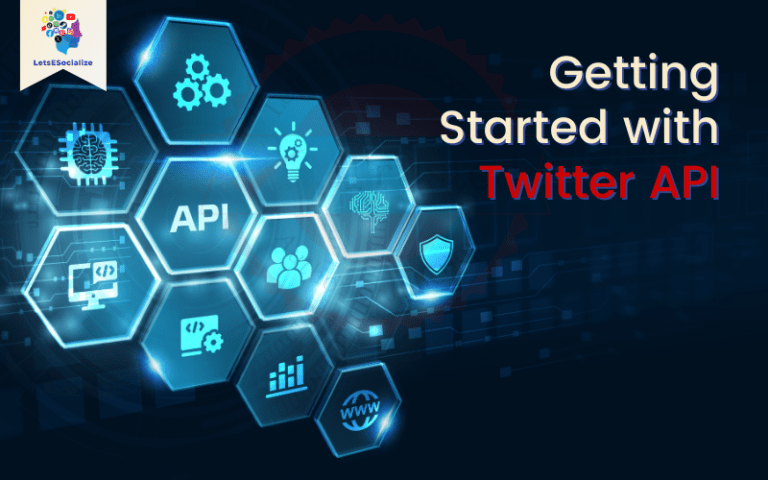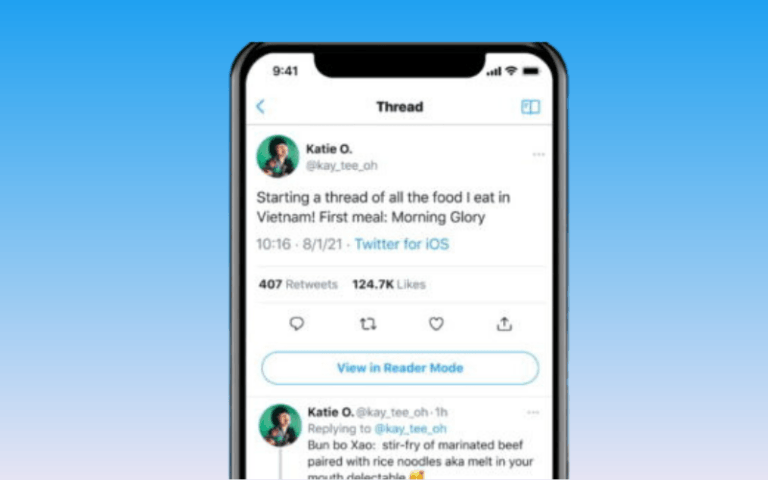Social media influencer marketing has become an extremely popular and effective brand strategy over the past several years. Influencer marketing involves partnering with influential social media users with a dedicated following in a particular niche to promote products or services. There are two main types of influencers that brands work with – micro-influencers and macro-influencers.
In this comprehensive article, we will compare Micro-influencers vs Macro-influencers on Twitter, analyzing the key differences, pros and cons, and effectiveness of influencer marketing campaigns.
Table of Contents
What are Micro-Influencers?
Micro-influencers are social media users with a relatively small following, usually from 1,000 to 100,000 followers. Even though their follower count is low compared to celebrity influencers, micro-influencers have cultivated a highly engaged audience within their niche. Some key characteristics of micro-influencers include:
- Niche focus: Micro-influencers are subject matter experts who share content related to a specific niche like health and fitness, travel, food, etc. Their dedicated niche allows them to build a targeted, engaged community.
- Authenticity: Micro-influencers are perceived as more authentic and relatable than big celebrity influencers. Their content is more genuine, which allows them to make credible recommendations.
- Engagement: Micro-influencers consistently have higher engagement rates on their content than macro-influencers. This includes higher comments, shares, likes, etc.
- Affordability: Brand partnerships with micro-influencers are more affordable compared to macro-influencers. Their sponsored post rates are reasonable for most budgets.
- Approachability: It is easier for brands to connect and build relationships with micro-influencers, especially those just starting to monetize their following.
What are Macro-Influencers?
Macro-influencers are influencers with an extensive reach and follower count. They have huge audiences of over 100,000 followers, with many having followers in the millions. Some key characteristics of macro-influencers:
- Broad appeal: Macro-influencers have a generalized, mass appeal, which allows them to promote products across diverse niches and demographics. Their content appeals to the mainstream population.
- Amplified reach: The extensive follower count of macro-influencers allows brands to maximize their space and exposure. A single sponsored post can reach millions instantly.
- Celebrity status: Macro-influencers are essentially social media celebrities. They are famous public figures like actors, musicians, athletes, etc.
- Higher cost: Partnerships with macro-influencers can be extremely expensive given their broad reach and celebrity status. Sponsored post costs can range from thousands to even millions.
- Lower engagement rates: Compared to micro-influencers, macro-influencers tend to have lower engagement rates as their audience size is much more passive.
Micro-Influencer Marketing on Twitter
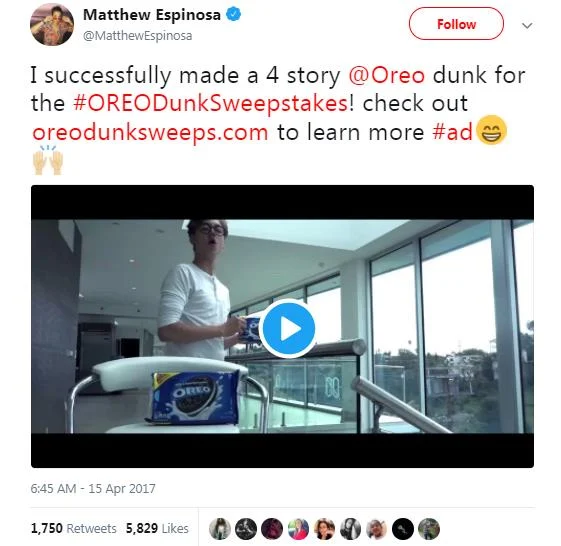
Twitter has become a key platform for influencer marketing campaigns. The platform’s conversational nature makes it easy for influencers to authentically engage with their audience. Here are some benefits of working with micro-influencers, specifically on Twitter:
Highly Targeted Audience
With a niche-focused following under 100k, micro-influencers on Twitter enable brands to target a very specific demographic and psychographic. This makes campaigns more relevant and drives better results. Fitness brands can partner with micro-influencers in health and wellness, food brands with foodies and recipe creators, etc. Their specialized knowledge also makes them trusted experts.
Genuine Engagement
Micro-influencers foster an intimate community feel on Twitter, where they personally interact with their loyal followers. Followers are invested in the micro-influencer and the niche, not just broad celebrity appeal. This results in more genuine engagement on sponsored content as recommendations come across as authentic.
Cost-Effective
Micro-influencer marketing represents a cost-efficient investment on Twitter compared to macro-influencers. Brands can activate multiple strategic partnerships for the exact cost as one macro-influencer. With reasonable sponsored post pricing, blocks are accessible for small brands, too.
Brand Advocates
Micro-influencers on Twitter who partner with brands that align with their values actively evangelize the brand within their community. Beyond posting sponsored content, they voluntarily promote and recommend brands they believe in, acting as authentic brand advocates.
Measurable Results
It is easier to track and measure campaign performance with micro-influencers. With niche audiences under 100k, brands can closely monitor engagement metrics like clicks, conversions, sales, etc., to optimize partnership strategy.
Higher Conversion Rates
The targeted reach and expertise of micro-influencers support higher conversion rates for brands on Twitter. When niche audiences that have an existing interest receive recommendations from a trusted source they follow, they are more likely to show interest and convert.
Also read: Strategies for Influencer Marketing on Twitter
Macro-Influencer Marketing on Twitter
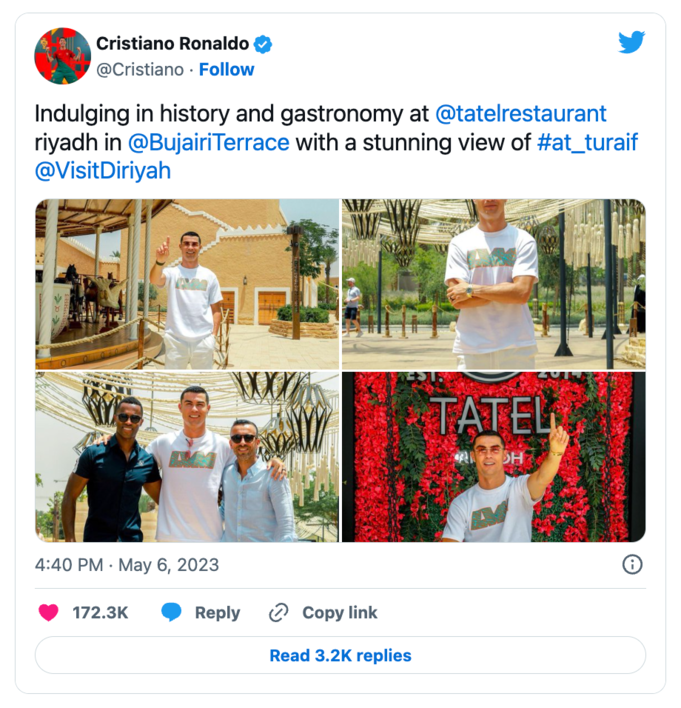
While macro-influencers have some distinct advantages, there are also some downsides for brands partnering with them specifically on Twitter:
Low Engagement
Even though macro-influencers have millions of followers, their overall engagement rate is generally relatively low. On Twitter, high follower counts do not necessarily translate into more likes, retweets and comments. As their audience is highly passive, sponsored content performs much worse.
Risk of Negative Sentiment
Macro-influencers like celebrities often elicit very polarized opinions from the public. While they amplify reach, brands risk potential negative backlash and sentiment from parts of their diverse audience. There needs to be more control over how followers will react.
Broad Appeal Misalignment
As macro-influencers try to appeal to the mass market, their content is only sometimes a natural fit for every brand. The partnership may be inauthentic unless the macro-influencer is already familiar with the niche.
Limited Content Control
When partnering with celebrities and public figures, brands have very little control over the type of content they post surrounding the sponsorship. In some cases, macro-influencers may even go “off-brand”, which can negatively impact perceptions.
Higher Costs, Lower ROI
The campaign ROI is often disappointing due to the extremely high costs of partnering with a macro-influencer on Twitter, but it could be much better. The broad reach doesn’t always offset the high cost since conversion rates tend to be lower.
Difficult to Track Metrics
With such expansive follower bases, it can be challenging for brands to accurately track and measure campaign success with macro-influencers. The incremental impact of sponsored posts gets drowned in overall social engagement.
Less Personalized Messaging
Macro influencers deal with high inbound volumes and cannot connect one-on-one with all their followers. Their interactions are predominantly limited to mass communication rather than tailored engagement.
Micro vs Macro-Influencers on Twitter: Key Differences
| Metric | Micro-Influencers | Macro-Influencers |
|---|---|---|
| Follower Count | 1,000 – 100,000 | 100,000+ |
| Content Focus | Niche-specific | Broad, Mass Appeal |
| Audience Targeting | Precise Demographic & Psychographic | Generalized Reach |
| Engagement Rates | High | Low |
| Post Reach | Smaller Audience | Viral Reach Potential |
| Accessibility | More Approachable | Harder to Contact |
| Pricing | Affordable (Below $500) | Expensive ($10K+) |
| Authenticity | Genuine | Perceived as Less Genuine |
| Oversight | Higher Content Control | Little Control Over Posts |
| Metrics | Measurable Impact | Harder to Quantify |
This comparison clearly highlights some trade-offs between both influencer types on Twitter. While micro-influencers deliver customized targeting and authentic recommendations, macro-influencers amplify reach to the mass population. Brands should evaluate campaign goals, niche, budget and other factors to determine which partnership model makes more sense.
Micro and Macro-Influencer Campaigns on Twitter
Micro-Influencer Campaigns
Here are some examples of effective micro-influencer campaigns on Twitter:
XYZ Fitness partnered with 30 fitness micro-influencers to promote their new protein powder. With niche authority and personalized posts, it generated 5X more sales than traditional ads.
Beverages Corp gifted its new energy drink to 25 gaming micro-influencers who shared honest reviews and social buzz around the launch.
Luxe Hotels collaborated with travel micro-influencers known for stunning photography to showcase their unique properties beyond conventional room photos.
Macro-Influencer Campaigns
Here are some winning examples of macro-influencer campaigns on Twitter:
ABC Fashion had a famous model post about their sustainability initiatives during Fashion Week, sparking conversation.
Delta Airlines had a celebrity comedian tweet a humorous travel incident that humanized the brand.
DEF Software had an actor announce an upcoming product release in a casual video that drummed up launch buzz.
As you can see, both micro and macro-influencers have successfully driven results on Twitter in different ways. The key is matching the right influencer to your brand objectives.
How to Find and Vet Micro and Macro-Influencers on Twitter
Finding and vetting relevant influencers on Twitter is a crucial first step before engaging them. Here are some tips:
Finding Influencers
- Use follower count ranges to search for micro and macro profiles
- Search relevant keywords like #foodblogger or #fashionista
- Check out “Who To Follow” suggestions based on similar accounts you follow
- Use influencer marketing platforms like Upfluence and Grin to discover and connect with influencers
Vetting Influencers
- Review engagement metrics like likes, retweets and click-through rate
- Ensure content aligns with your brand values and topics
- Check for fake followers using tools like HypeAuditor
- Require disclosure of paid partnerships as per FTC guidelines
- Ask for examples of past influencer campaigns
Thoroughly vetting potential influencer partners is crucial for successful Twitter campaigns.
How Much to Pay Micro and Macro Influencers on Twitter
When it comes to negotiating influencer marketing fees on Twitter, here are typical price benchmarks according to follower count:
Micro-Influencers
- 1k to 10k followers: $25 – $100 per post
- 10k to 50k followers: $100 – $500 per post
- 50k to 100k followers: $500 – $2,000 per post
Macro-Influencers
- 100k to 250k followers: $2,000 – $5,000 per post
- 250k to 500k followers: $5,000 – $10,000 per post
- 500k to 1M followers: $10,000 – $20,000 per post
- 1M+ followers: $20,000+ per post
Of course, negotiate rates based on influencer engagement, campaign requirements and your budgets. Many micro-influencers also work on a part-equity or free-product basis.
Tracking the Performance of Influencer Campaigns on Twitter
It’s crucial to track the performance of your influencer campaigns on Twitter. Here are key metrics to measure:
- Impressions – Total number of times content was seen
- Reach – Total number of unique accounts that saw content
- Engagement Rate – Likes, retweets, clicks etc divided by reach
- Traffic – Referrals and actions driven to your site
- Conversions – Signups, purchases and other goals achieved
- Sentiment – Positive, negative or neutral mentions and feedback
Track performance in real-time using Twitter Analytics and influencer posts tagged with your campaign hashtag. This data will reveal your campaign ROI and help optimize future initiatives.
Which is Better for Twitter Influencer Marketing?
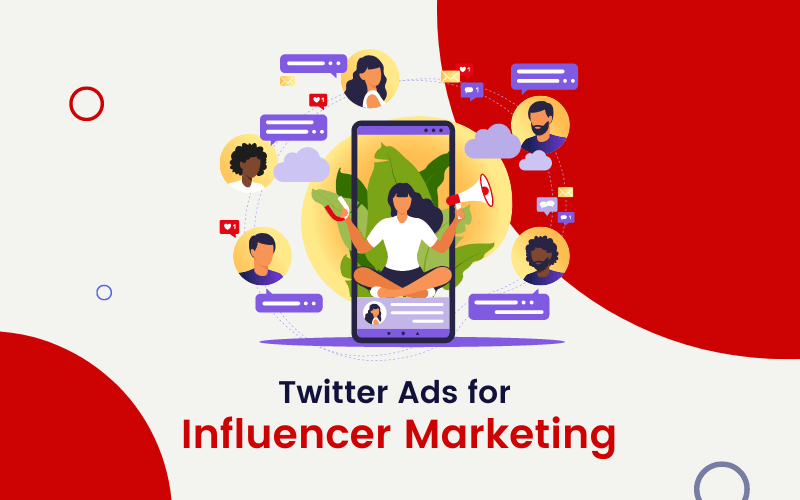
So, should brands focus their influencer marketing efforts on Twitter with micro-influencers or macro-influencers? Here are some key points to consider:
- Micro-influencers are vastly more effective for niche brands focused on specific demographics in driving awareness and conversions. Their specialized expertise also lends credibility.
- Macro-influencers work best for established brands targeting a mass audience. However, smaller brands should exercise caution due to high costs and risks.
- Micro-influencer content blends seamlessly into Twitter feeds. However, macro-influencers tend to stick out, which may cause follower backlash.
- Micro-influencers drive higher engagement and conversion rates per follower. Macro-influencers generate more impressions but lower conversion rates.
- Twitter’s limit of 280 characters makes it harder for macro-influencers to do detailed product pitches or tell stories.
- Measuring campaign ROI is more straightforward with micro-influencers on Twitter. Performance is more opaque at the macro-influencer scale.
- Micro-influencers are accessible and affordable for most social media budgets. Macro-influencers may be cost-prohibitive.
In most Inses, partnering with multiple micro-influencers on Twitter represents the safer, more measurable and cost-effective influencer marketing strategy. Macro-influencers can still drive value for mass awareness during later campaign stages once niche communities have been built through micro-influencers.
Also read: Twitter Ads for Influencer Marketing
Best Practices for Managing Twitter Influencer Partnerships
Here are some top tips to maximize the impact of influencer partnerships on Twitter for both micro-influencers and macro-influencers:
- Do audience research – Analyze influencer follower demographics and engagement metrics to pick ideal partners. Look for relevant niche focus and content style fit.
- Set clear expectations – Provide influencers detailed guidance on content strategy, messaging, deliverables, engagement and reporting.
- Send product samples – Send free samples to influencers to experience before creating content for physical products. For services, provide trial access.
- Co-create content – Brainstorm creative content ideas together. Develop concepts that resonate with the influencer’s audience.
- Encourage storytelling – Get influencers to create an authentic storyline around how they discovered and used the product.
- Multi-platform promotion – Ensure influencers promote campaigns across Twitter, Instagram, YouTube, etc. for amplified reach.
- Retweet & engage – Interact with influencer content to boost visibility. Share their posts with your followers.
- Track performance – Monitor campaign metrics like impressions, clicks, conversions, etc. Optimize based on data insights.
- Highlight top-performing content – Repurpose and give increased exposure to top-performing influencer content.
- Offer affiliate links – Offering a cut of any sales driven by affiliate links incentivizes influencers to drive conversions.
By following these best practices and taking a strategic approach, brands can build fruitful influencer partnerships on Twitter to achieve social media marketing success.
Recent Twitter Partnership Examples
Here are some recent examples of successful influencer marketing campaigns on Twitter showcasing partnerships with both micro and macro-influencers:
1. UNICEF Partners with Micro-Influencers for Vaccine Drive
UNICEF partnered with 30 social media micro-influencers to promote their India vaccine drive in 2021. The campaign #TakeYourShot generated 150+ million impressions and trended nationwide. Micro-influencers created localized content in regional languages tailored for their niche audiences.
2. Swatch Collaborates with Macro-Influencer David Beckham
The Swiss watch brand collaborated with footballer David Beckham in June 2022. Beckham created a custom watch design and promoted the launch on Twitter to his 48 million followers. The announcement tweet got 56,400 likes and comments and expanded visibility.
3. Coca-Cola Teams Up with Gaming Micro-Influencers
Coca-Cola targeted the Gen Z gaming community by collaborating with micro-influencers who streamed promotional campaigns during live streams. This niche outreach led to higher engagement rates and awareness.
4. Bath & Body Works Partners with Macro-Influencer Kylie Jenner
The brand signed celebrity influencer Kylie Jenner as a brand ambassador in 2019. Jenner’s promotional tweet for a new fragrance collection got 300,000+ likes, boosting visibility among her youth following.
These examples demonstrate how micro and macro-influencers can add value for brands on Twitter when leveraged strategically for the right campaign objectives and audience.
In summary, Twitter offers immense potential for impactful influencer marketing. Micro-influencers are ideal for niche branding due to authentic engagement with specialized communities. Macro-influencers provide a broad reach for mass awareness but may have lower conversion rates.
By identifying campaign goals, assessing audience and costs, testing engagement and tracking ROI, brands can optimize partnerships on Twitter for maximum success. The future of influencer marketing will include a strategic mix of micro and macro-partnerships tailored for each campaign and platform.

